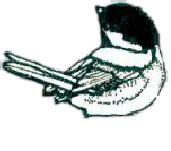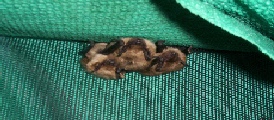Second Chance Wildlife
Rehabilitation
“Until we extend the circle of our compassion to all
living things, we will not find peace.”
Albert Schweitzer


There are 18 species of bats in Colorado. All are protected by law, all are insectivores
(meaning they eat mainly insects) all are very small ranging from 1.5 inches to 6
inches. Bats are beneficial. They help control insect pests like mosquitos and play
a big role in reducing insect-
In Colorado bats either hibernate or migrate in the fall. During the spring and summer months they become active at dusk ending their foraging by daybreak. Daytime roosts like attics, sheds, even porches offer protection from predators and weather. They rest there until time to hunt again at dusk. They do not fly nonstop all night but rest periodically on sides of buildings, etc.
Bats are often seen during the day on a “day roost” like a porch. If it is not on the ground, the best thing is to leave it alone. Bats may be found on the ground after a storm, a cat or squirrel has knocked them from their perch. It may be injured. Most bats cannot take off from the ground but must “free fall” from their roost before they can take flight. A grounded bat needs help but do not touch or attempt to help the bat. It is also possible that it is sick. Contact a local wildlife rehabilitator for help with a grounded bat.
Bats can carry rabies. That does not mean that all bats have rabies. Bat rabies accounts for approximately one human death a year in the US. Dogs attack and kill more humans annually than die of bat rabies in a decade. Statistically pets, playground equipment, and sports are far more dangerous than bats; less than half of 1% of bats ever contract rabies. That being said, it is wise not to touch a bat if you find one.
If you find a bat inside your house it is recommended that you contact your local Health Department immediately even if you do not believe anyone was bitten. If it is possible that your pet has come into contact with the bat (that is often how the bat got into the house in the first place) also contact your veterinarian.
Bat populations are rapidly declining worldwide and they are North America’s most
rapidly declining and endangered land mammals. You can help protect bats by changing
practices on using pesticides, installing bat houses, controlling free-

Bats
